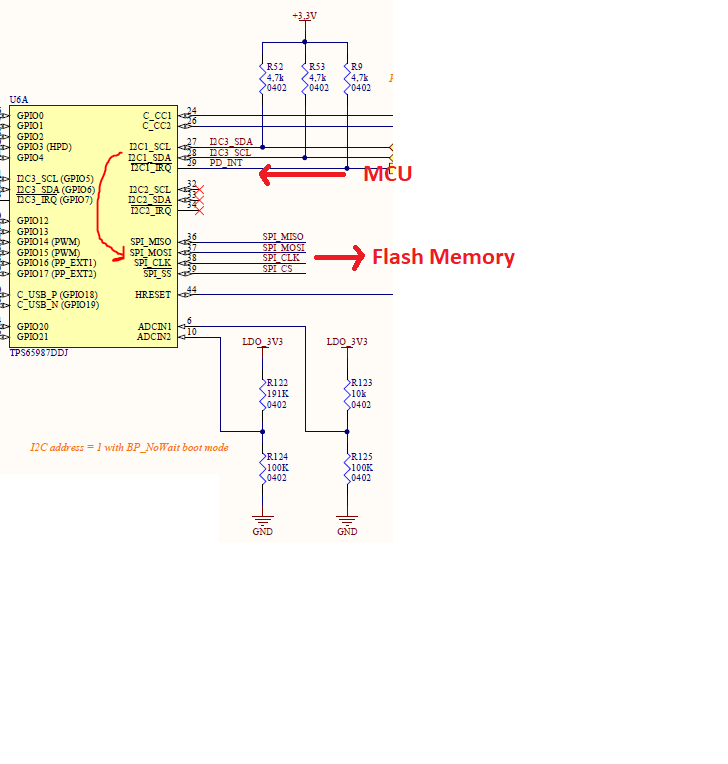Other Parts Discussed in Thread: TPS65987, TPS65987D,
Hello everyone,
I hope you are all doing well.
So, I have used a TPS65987 on a custom board. Unfortunately, I've wired only the I2C1 interface with the MCU, and the SPI interface only with the Flash, no external access :( I know, big mistake, should have at least put some test points.
I thought we would be able to configure the flash by talking with the TPS via it's I2C1 interface, but apparently not.
As we couldn't configure the TPS, we have bought the EVM board to see what we should do. Apprently the memory is flashed directely via SPI (through FTDI converter), the actual reading and writing in the different registers is done via I2C2 and not I2C1.
I mean we tried to not use the Flash memory, just configure the TPS directely via I2C, but unfortunately for the moment we cannot do anything with the I2C1 interface.
But from what I've understood in the datasheet is that I2C1 is the actual configuration interface, and can be master or slave.
So can anyone please tell me why I2C1, even on the EVM board, is not usable in this case? Is it a matter of slave/master configuration (as I2C2 is only slave)? Did I misunderstand the datasheet? Is there anything we can do to configure the TPS with only I2C1 interface and a Flash memory linked only to the TPS?
PS: I am not an embedded system engineer as the current lack of details might show (they are very busy so I'm investigating) , but If you need any information I can provide it quickly.
Thank you for your help!
Best regards,


